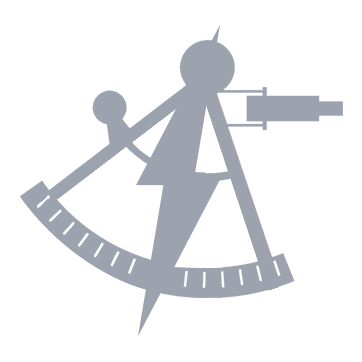Summary
Lieutenant Syleth Sh’vot serves as a Research Fellow within the Advanced Science, Technology and Research Activity, hosted aboard Polaris Squadron, and as the Chief Science Officer of the USS Ingenuity, a research platform within Polaris Squadron. A well-published geophysicist with a doctorate from the Vulcan Science Academy, Lieutenant Sh’vot made significant contributions to the field of terraforming and to the Federation’s understanding of class Y planets during his illustrious career, and then, in 2396, he joined Starfleet through the Officer Candidate School program.
Appearance
Lieutenant Sh’vot is a sixty seven year old Andorian scientist, and his appearance is very much in line with that. His hair has faded over the years, and his skin has weathered, not from physical activity but rather from age. Even as a Starfleet officer, his physical fitness only barely passes minimum expectations, and he puts only enough time into his appearance to meet the minimum standard defined by the regulations. For Lieutenant Sh’vot, he prefers to devote himself to more intellectual pastimes than his mortal shell, but among his colleagues, this is not a unique trait.
Personality
Lieutenant Sh’vot lives and breathes the scientific method. He enjoys nothing more than conducting novel research, developing models, and debating the merits through peer reviewed processes. He particularly appreciates interdisciplinary problems, and he has learned over his long tenure to appreciate the collaboration and critiques that drive innovation forward. This has served Lieutenant Sh’vot well in his research, but it has challenged him with more typical interpersonal relationships where such evidence-based approaches are not as well received. As such, he does far better in a scientific leadership role than a traditional management role, and it was a major reason he left his role as an Assistant Chief Science Officer to take a research fellow appointment in the Advanced Science, Technology and Research Activity.
Although a geophysicist by trade, Lieutenant Sh’vot brings a lot more to his scientific approach than just geophysics. In fact, one of his strong points is his ability to blend adjacent disciplines, and he has devoted decades of his life not just to geophysics, but also to astrophysics, aeronomy, geology, mineralogy, biochemistry, and other discplines that improve his understanding of the universe and how it works. Beyond the personal satisfaction he finds in this renaissance set of studies, his interdisciplinary blend means that, while he is a go-to person for all things geophysical in nature, he’s also capable of supporting research teams in a much wider range of practice areas.
Outside of work, Lieutenant Sh’vot spends most of his time sopping up information like a sponge. He reads prolifically, not just scientific journals and research papers, but also follows news and current events, and as far as interpersonal interaction goes, his relationships with other members of the crew center predominantly on intellectual discussions. He’s never had much interest in more frivolous pastimes, neither on the holodeck nor other forms of entertainment, and this leads to a perception, rightly so, that he is a bookworm through and through.
History
Syleth Sh’vot was born to a pair of krill beast farmers in an agrarian village far from the metropolitan centers of Andoria. From a young age, Sh’vot had no interest in continuing the family trade, nor did he care for the juvenile frivolities of his peer group. Instead, he spent his days wondering how things worked and how they came to be, and at night, he would look up at the stars and dream of solving the mysteries of the cosmos. This insatiable curiosity, coupled with a brilliant mind, saw him excel academically, and his teachers described him as a sponge, sopping up anything they threw at him. By fifteen, Sh’vot had learned all that the local schools could offer, and he began to look off-world to continue his education.
In 2350, Syleth Sh’vot was accepted into the physical sciences program at the University of Tomobiki. The sixteen year old left the Andorian countryside and never looked back. Although younger than most of his peers, Sh’vot thrived in the university setting, burying his head in his books, taking on an outsized course load every quarter, and befriending many of his professors as they’d discuss research topics beyond the classroom. Dabbling in everything from astrophysics to geology to anthropology, Sh’vot had finally found a place that could answer his never-ending stream of questions about the universe. In his second year at Tombiki, Sh’vot selected geophysics as his major field of study and, completely dedicated to his studies, completed his degree requirements two years later.
Syleth Sh’vot graduated from the University of Tomobiki in 2353 and was immediately accepted into the masters program at the Regulus III Science Academy. While the University of Tomobiki opened the academic world to him, Regulus III is where, for the first time, he felt he had found his people. His peers were as driven and intelligent as he was, and they’d both contribute to and challenge him on his research. For two years, he continued his studies in geophysics, and in 2355, he published his masters thesis presenting a novel method for targeted ion annihilation in plasma toroidal systems. This paper attracted significant attention from the terraforming community, and he received an invitation from the Vulcan Science Academy to continue his research within their prestigious doctorate program.
At the Vulcan Science Academy, Syleth Sh’vot found himself truly for the first time. His master’s thesis had been a purely intellectual endeavor, but his doctoral advisor expected him to put his theories to practice. He was attached to the Federation Terraforming Command to conduct experiments, and Sh’vot quickly learned that what looked good on a whiteboard did not always translate to the real world as his first few experiments failed due to negative feedback cycles in the magnetosphere that caused reversions of the plasma taurus. Sh’vot found more than failure among the stars though. He also found academic camaraderie in those just as passionate about the work as he was. Pairing up with geophysicists from the Terraforming Command, the Daystrom Institute, Starfleet Science, and other research institutions, Sh’vot refined his theories until, at last, he had a demonstrable, working method that he succeeded in applying to a terraforming project on Beta Aurelius II. In 2359, Sh’vot canonized his revised method in his dissertation, A Method for Climatological Geoengineering through Micro-Manipulations of the Magnetosphere in Plasma Toroidal Systems, and later that year, he was awarded a Doctorate in Geophysics from the Vulcan Science Academy.
Having built strong relationships with the Terraforming Command during his time at the Vulcan Science Academy, Dr. Sh’vot chose to return to the agency after graduation. As opposed to the narrow focus during his doctoral work, his post-doctoral career stretched him across a wide practice area ranging from planetary candidate selection to initial geoengineering efforts to ecological management. He was on a team involved in notable projects such as Blue Horizon and New Halana, and he came to enjoy not just traditional geophysics, but also the interdisciplinary work with astrophysics, aeronomy, geology, mineralogy, biology, etc.
In 2365, Dr. Sh’vot received an invitation from a research team investigating the geophysical properties of Ventax II. The opportunity to study a planet with naturally occurring east-west poles drew him in, and although the project seemed far more narrow in focus than his work at the Terraforming Command, it ended up being quite the opposite as, in addition to his direct research, Sh’vot also found himself fascinated by the Ventaxians and the sociology of their post-industrial culture. For two years, he worked at the Federation research station on Ventax II, until crisis befell the planet and his team withdrew while Starfleet stabilized the situation.
Dr. Sh’vot’s experiences with adjacent disciplines, both during his time in the Federation Terraforming Command and on Ventax II, led him to seek out opportunities to expand his areas of study during the 2370s and 2380s. During this period, Dr. Sh’vot participated on research teams and published papers in subject matter ranging from traditional geophysics and astrophysics to other disciplines as far ranging as ecology, anthropology, and biochemistry.
By the late 2380s, Dr. Sh’vot had taken all this newfound knowledge and focused it on a specific topic he wanted to develop a more deep understanding around: class Y planets, the ultimate challenge for terraforming and ecological maintenance. Due to the scarcity of class Y planets, Dr. Sh’vot found himself needing to attach to multi-year survey missions on Starfleet vessels in order to conduct his research. On these expeditions, one could not wear only a single hat, and thus, even as a civilian, Dr. Sh’vot found himself picking up light duty shifts to support the crew. His experience during these deep space missions ultimately led him to make a big decision: he wanted to join Starfleet officially, rather than just attaching to it temporarily. He saw it as a way to more consistently explore the final frontier.
In 2395, with outstanding recommendations from multiple Commanding Officers on the vessels he’d attached to, Dr. Sh’vot was accepted into Officer Candidate School, Starfleet Academy’s one year program to qualify professionals for service on Starfleet vessels. Dr. Sh’vot had no issues with the academic coursework, but he found the field training requirements difficult as he’d never put much emphasis into physical fitness, field operations or tactical topics. Ultimately though, he scraped by and graduated OCS with the rank of Lieutenant J.G.
Given Lieutenant J.G. Sh’vot’s long and diverse scientific career, he had a wide range of options available to him after graduation, and ultimately he accepted the position of Assistant Chief Science Officer aboard the USS Averner. Having spent most of his life in the constructive debate of peer reviewed research, some of his staff, who’d come up in the more collegial ranks of Starfleet, found him abrasive in his critiques of their work. Along similar lines, Lieutenant J.G. Sh’vot struggled with the realities of personnel management that came with being an assistant department head as interpersonal conflict, outside the realm of scientific debate, was not something he had any experience with. Nonetheless, the opportunity to conduct novel research on the frontier kept him engaged for his three year tenure aboard the Averner.
In 2399, Lieutenant J.G. Sh’vot was approached by Fleet Admiral Allison Reyes with an opportunity that he couldn’t pass up. The former Deputy Director for Frontier Sciences at Starfleet R&D presented him with an opportunity to work as a Research Fellow within the Advanced Science, Technology and Research Activity. This position came with all the same opportunities of conducting research on the frontier, but it had less personnel management responsibilities and more resources available to him. In his eyes, there was really no negative, and he accepted the offer. With his appointment also came a promotion to Lieutenant.
Service Record
| Date | Position | Posting | Rank |
|---|---|---|---|
| 2401 - Present |
Chief Science Officer ASTRA Research Fellow, Geophysics |
USS Ingenuity |
 Lieutenant Lieutenant |
| 2399 - 2401 | ASTRA Research Fellow, Geophysics | USS Polaris |
 Lieutenant Lieutenant |
| 2396 - 2399 | Assistant Chief Science Officer | USS Averner |
 Lieutenant Junior Grade Lieutenant Junior Grade |
| 2395 - 2396 | Candidate | Officer Candidate School |
 Cadet Cadet |
| 2384 - 2395 | Research Fellow-at-Large | Daystrom Institute | |
| 2367 - 2384 | Research Scientist | Various | |
| 2365 - 2367 | Geophysicist | Ventax II Research Station | |
| 2359 - 2365 | Geophysicist | Terraform Command | |
| 2355 - 2359 | Doctoral Student | Vulcan Science Academy | |
| 2353 - 2355 | Masters Student | Regulus IIi Science Academy | |
| 2350 - 2353 | Student | University of Tomobiki |

 Bravo Fleet
Bravo Fleet






